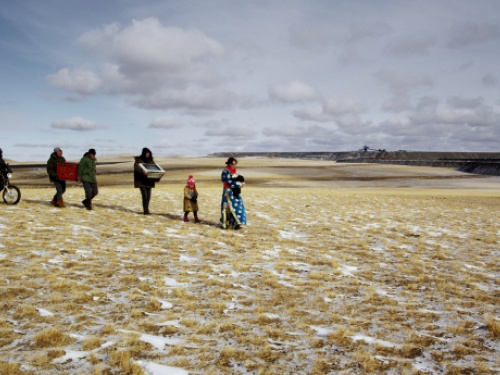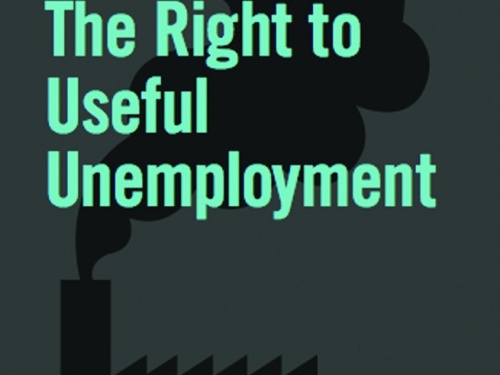TEXT2SPEECH: On Alternative Porn and Aesthetic Sensibility
TEXT2SPEECH is a new series of reading groups organised by the ICA Student Forum to provide a space for debate around an eclectic range of texts, with each meeting topically responding to a part of the ICA’s current programme. The group is free to join and open to all, encouraging anyone with an interest in contemporary art and theory to join either regularly or for one of the meetings.
ICA Student Forum organiser Jane Scarth has written an engaging summary of the June discussion for the ICA Blog.
The second of our new bi-monthly reading groups looked at the text Sodom Blogging: “Alternative Porn” and Aesthetic Sensibility by Florian Cramer (Texte zur Kunst, December 2006; all quotes below are taken from this work). It was chosen in order to raise a number of discussions around the relationship between pornography and aesthetics, ethics and feminism. Although the exhibition did not display his explicit films, the Walerian Borowczyk exhibition in the Fox Reading Room was the incentive for the debate. Many of Borowczyk’s feature films are considered pornographic, yet accepted by mainstream and alternative audiences as artful in their portrayal of sex; the work of an artistic ‘genius’. The many questions that the work and text raise include: is there an aesthetic context in which the ethics of viewing pornography can be side-lined? What is the agency of the sexually active subject of the gaze? And from where is our pleasure derived?
But can there ever be a pornography beyond the obscene?
Cramer argues that ‘the obscene is porn’s aesthetic register’, so we spent the first part of our conversation unpacking obscenity as a term and concept. Initially this made us think about how pornography makes the viewer feel; what is too obscene? It was agreed that surely this is a subjective judgement and one member of the group stated a feeling of discomfort at even the idea of viewing pornography. As opposed to the obscene, what is at stake in this statement was the consent of those on screen. A large part of the feminist porn debate pivots on this question. As the viewer, we can never know what forms of abuse or coercion have resulted in the production of the material available. Yet on the other hand, does making this assumption disempowering to the actors on screen? It is these ethical implications that lead to the creation of alternative material such as ‘feminist porn’, precisely the subject of Cramer’s essay.
Proclamations of an alternative pornographic culture and imagination still always also mean taking a stand against anti-pornography feminism.
The field of feminist discourse is thoroughly split over the questions raised by pornography. While Cramer attempts to make a stark distinction between those lobbying for censorship and those celebrating female sexuality in other ways, there are many, many layers to the debate. The radical anti-pornography feminists such as Andrea Dworkin and Catherine MacKinnon can often be off-putting in their rhetoric, but they had a big impact in raising awareness of the effects and affects of pornography in the 1980s. Their arguments bring limitations around people’s agency over their bodies, so we thought about the complexities involved in the terms sex-positive and sex-negative; no one would want to label themselves the latter, but the former fails to take into consideration the possibility that sex is not always a positive experience. Yet to censor imagery is an attempt to conceal a much larger issue. Is pornography the source or the symptom of a misogynist culture? The internet provides yet another layer: it makes porn more accessible and thus more difficult to censor in the first place, and do we really want to call for more government control of the online domain? Censorship certainly provides no solution. As a genre that has existed for centuries, people will always find a way to access what feeds their desires with pornography.
The pornographic exploitation of codes from subcultures and artistic experimentation on the one hand, and the sub-cultural appropriation of pornographic codes on the other
In the text, Cramer draws on examples from the 1970s punk scene and other subcultural genres in order to illustrate how fetish became a signifier outside of the porn industry. We talked about how this 70s scene was really very macho and male-dominated, that it wasn’t until the 1980s that feminist punk bands started to be more politically radical in terms of identity politics. According to Cramer, these have now merged into what is termed ‘Indie Porn’, an alternative porn scene where punk aesthetics are fetishized under the rhetoric that the actors are more authentic than those in the mainstream industry. This complicates the field, because it gives the impression of a liberated subject, yet with all the same ethical concerns of mainstream porn. This is one of the ways that aesthetics enters the register of pornography. We then concluded our discussion by speaking more directly about how art provides another perspective on the debate.
With her ritual invitation of the audience to see into her vagina by means of a speculum, Sprinkle concludes the iconographic tradition of Courbet’s L’Origine du Monde (1886) and Duchamp’s Etant Donnes (posthumous, 1968), but … exorcises both the taboo and the sexual mystery from such display.
For one member of the group, it was the first time they had been introduced to the work of Annie Sprinkle, ‘an actress in seventies mainstream porn who became an Action artist and “alternative porn” pioneer’. Her work A Public Cervix Announcement (first performed 1988) is cited by Cramer as a subversive ‘conclusion’ to the female nude in modern art. This sparked a conversation about the female body in the painting of Picasso and Matisse, which sexualises it under the guise of beauty. The tradition of feminist art history has interrogated and challenged this at length since the 1970s, yet very little has significantly changed. As a result of this history, the female body is a powerful image, and we agreed that in the public domain it is men who have control of this image as a tool. Pornography analysis and theory helps us to think through the place of art in this context. Yet it is difficult to resolve our own implications in this culture when our options for resistance are limited to censorship, leaving most of us to give over to acceptance.
Everyone who attended was honest and open about their perspective, producing a very fruitful discussion. While no conclusions could be drawn, the conversation around the idea of the ‘obscene’ as an aesthetic category really opened up a new way to think about the issues, particularly in relationship to art and questioned whose judgements are prioritised. Covering a broad range of topics that intersect with the pornography debate, this meeting was a fantastic opportunity to speak together about the way in which porn infiltrates culture. ■
Join us for our third meeting, where we will discuss a text by Etan Ilfeld, Contemporary Art and Cybernetics: Waves of Cybernetic Discourse within Conceptual, Video and New Media Art (in Leonardo, Vol. 45, No. 1, 2012, pp. 57-63). The perspective provided in this short essay offers a platform for us to think about whether current artistic practices dealing with new technologies are in dialogue with earlier questions posed by artists of the mid to late twentieth century.
Tracing a short history with varied examples, Ilfeld takes an analytical approach, looking at cybernetics both in its scientific and artistic contexts, in an attempt to think through its place in artist discourse today.
During the session we will ask questions such as: What does it mean to see conceptual art through the frame of cybernetics? Do recent practices have a relationship to the past and what, if any, is the value of creating this lineage? What other examples or alternative histories may there be within this field?
This article is posted in: Articles, Exhibitions, Film, Student Forum
Tagged with: Jane Scarth, Florian Cramer, TEXT2SPEECH, Walerian Borowczyk, pornography, the male gaze, ethics





